Blues clues
University of Michigan student Adrian Koch shows off a souvenir from the South: one of those metal bottle openers, the kind that with one upward motion would snap a crimped metal cap off the top of a bottle of pop or, rather, coke, as soft drinks are called in that part of the country.
Not only is the rusting metal opener a bit of a relic since screw-off lids have become the norm on most beverage bottles, but engraved on the handle is a phone number, 318J. Four- and five-digit phone numbers were replaced with the current seven numbers beginning in the 1950s.
For the music and neuroscience major, the trinket from days gone by is symbolic of the Mississippi Delta area he and other students visited during spring semester as part of a course on “Living the Blues.”
“You see little snapshots into the past all over,” Koch says. “Sharecropping shacks still stand today, years later, and they still have all these kinds of artifacts in them.”
Stuck in time
Darin Martin, a music major in the College of Literature, Science, and the Arts, used the term “stuck in time” to describe the American South that he and his classmates visited in May. The conditions of extreme poverty and a lack of progress were striking, says Martin, but the resilience of the people was inspiring. He was struck by how music carried them through adversity, not only in the past but still today.
 “Everyone there was excited to share their history and have us learn about everything they went through and what they have done,” Martin says. “It was really eye opening, and made things more real going down there and really talking with people who’ve lived through the experiences of being sharecroppers, or who had ancestors that were slaves. To hear how they were able to create this music, and that the blues music was their way of expressing themselves.”
“Everyone there was excited to share their history and have us learn about everything they went through and what they have done,” Martin says. “It was really eye opening, and made things more real going down there and really talking with people who’ve lived through the experiences of being sharecroppers, or who had ancestors that were slaves. To hear how they were able to create this music, and that the blues music was their way of expressing themselves.”
Martin, a tuba player in the Michigan Marching Band, learned to play a jug for the trip. He says he knew nothing about blues music before taking the class.
“American Roots Music: From Sacred Harp to Contemporary Blues,” its formal title, is a Third Century Initiative-funded interdisciplinary course taught by Bruce Conforth, a lecturer of American culture in LSA, and Mark Clague, associate professor of musicology in the School of Music, Theatre & Dance.
(Click on the arrows on either side of the image to scroll through the slideshow above.)
Blues, rock, and roll
For years, Conforth has conducted research on roots music, which historically has taken the form of blues, folk, gospel, and early country. Modern definitions, brought about by a resurgence of interest in the music style, include rhythm and blues and rock, but the original music is what Conforth and Clague wanted students to experience through the eyes of some of the legends of the genre, living and dead.
The course was taught over two semesters. In winter, the students heard about roots music from Conforth, Clague, and various guests who came to campus. They spent time learning and practicing sacred harp music, which is a cappella choral singing that originated in New England in the 1770s, continued throughout the South, and today can be heard throughout the nation. This was one of the best experiences for Annie Jeng, a School of Music, Theatre & Dance doctoral student in piano performance.
“We sang in almost every class at 9:30 in the morning,” she says. “I had so much joy, sometimes not being in the best mood waking up for a 9:30 class, but starting the day with song was an amazing thing that brought our class together.”
During that first semester, the group also formed an instrumental ensemble and played music together, made instruments out of cigar boxes, wood, and wire, and prepared for the tour that took place in the spring.
The crossroads
Travels took students to Tennessee, Arkansas, Mississippi, and Louisiana, where they visited homesteads, gravesites, museums, a prison, blues music venues, and other regular haunts of artists like Mississippi John Hurt, Memphis Minnie, Robert Johnson, Charley Patton, Sonny Boy Williamson, Muddy Waters, and Willie Brown.
Built into the trip was some community service, which took students to New Orleans to work in areas still damaged from Hurricane Katrina.
“In general, we had a threefold approach to try to take students out of the classroom, out of their normal comfort zones, and place them into areas where they could really learn, not just historical facts but about cultural ideas,” Conforth says. “They had no idea this culture was still as vibrant as it was because, to a lot of people, roots music is something that they read about in history books or music books.”
But by virtue of this unique class, the Michigan students were able to see that, for a large segment of America’s population, “this still is how they communicate,” Conforth says. “Music still serves an important social function.”
For the love of it
Clague says he enjoyed seeing students who are training to be professional musicians standing alongside others for whom music is more of an avocation, as together they heard the legendary stories, visited historical sites, and played and sang at places like the porch of a general store, in churches, or at the gravesites of blues legends.
“Music is so much about the way it brings people together. It’s an art form but it really for me is a social glue — a way in which we negotiate our relationships with people,” Clague says. “Music happens easily. It should not be so much about talent as a kind of universal, human form of communication.”The group stayed in colorful places like the Shack Up Inn, with its slogan “the Ritz we ain’t,” located on the Hopson Plantation in Clarksdale, Miss. The former sharecropper shacks, though authentic in many ways, have modern amenities.
They visited jazz and blues clubs and juke joints with names like Ground Zero, Red’s Lounge, William Seaberry’s Po’ Monkey, and the Blue Front Café. At the latter, students got to jam with the owner who was one of the legends they had heard about, Jimmy “Duck” Holmes.
We like American music
While playing with Holmes was a highlight for Mark Dulchavsky, a biophysics major and music minor, the best part of the trip for him was the end of each day.
“If we went and saw a historical site we would come back and talk about how that impacted the formation of the music, or impacted the lives of the musicians, or the Civil Rights Movement, in general,” he says. “There are a lot of very important cultural and musical sites there that nobody cares about, and so they are just down dirt roads. It’s very interesting to go there and see these important sites slowly wiped off the map, and then go discuss how important they are to the face of American music.”
Like Martin, Jeng didn’t know much about blues music and she had never been to the South.
“It really opened my eyes. It was a great experience,” she says. “I love the music!”
Read more stories about engaged learning at Michigan’s World Class website.
(Images by Mark Clague.)


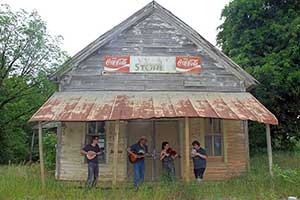

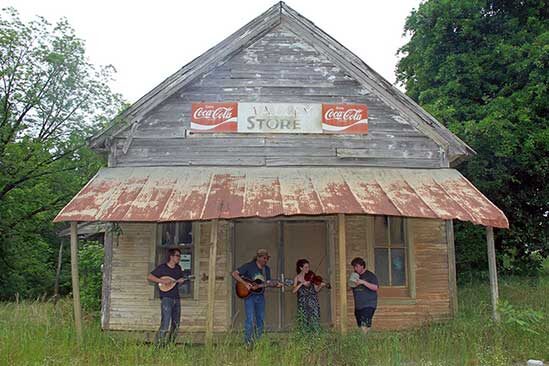
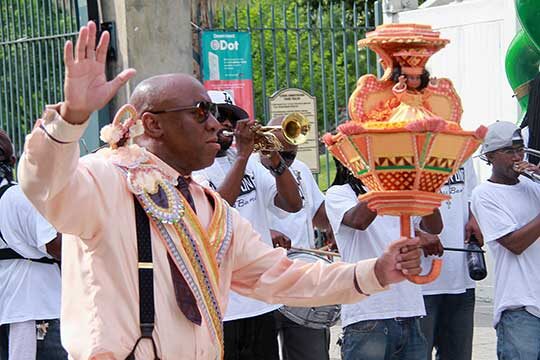
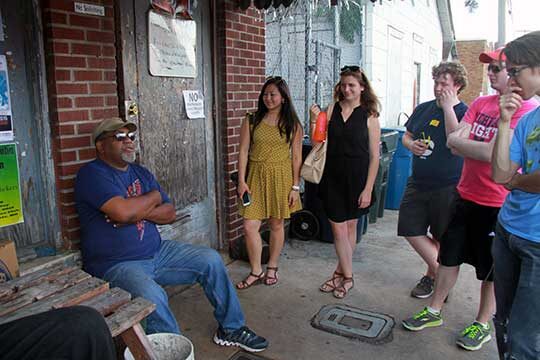

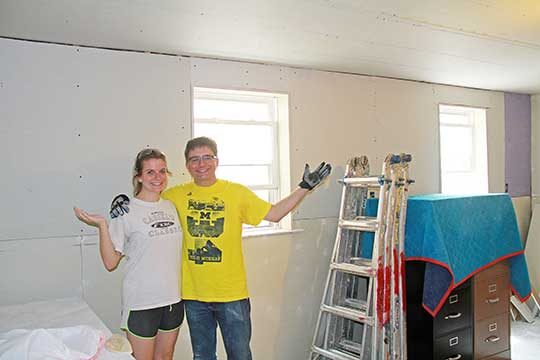
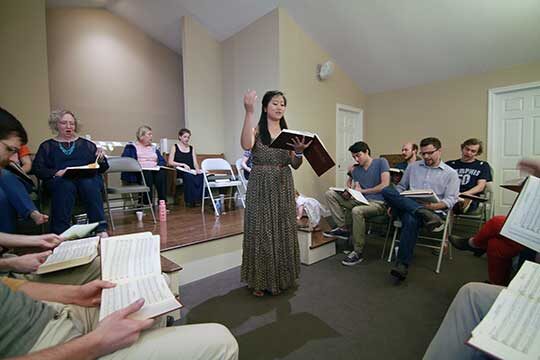
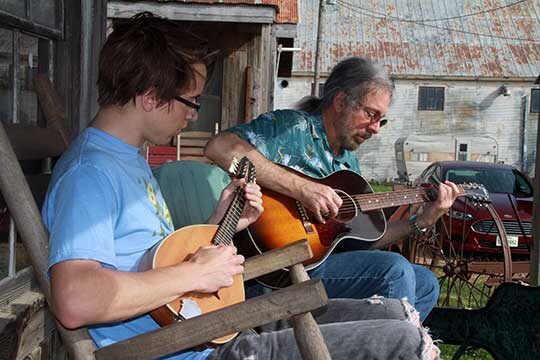
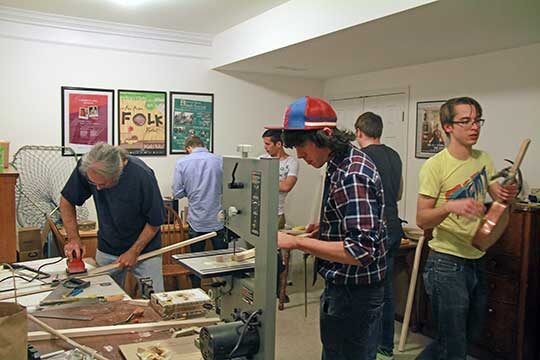
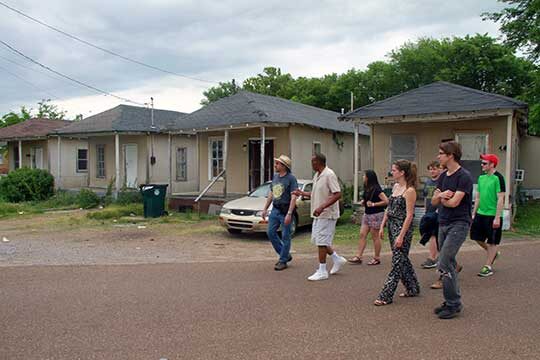




Kevin Bolton - 1973
The class sounds wonderful and I’m glad so many people got to participate. When I was in Ann Arbor we had the Ann Arbor blues and jazz festival which brought up many artists who played in a large venue and gave exposure to many of us to see the original artists. I remember Hound Dog Taylor and Sippie Wallace along with Dr John and Ray Charles. It has been a lifelong passion for me.
Reply
Kyle Stone - 2005 (LS&A)
Really enjoyed this article. What an unforgettable experience for these students. It’s nice to see current music students taking an interest in blues. Few other American art forms tell America’s story like the blues (and jazz too!).
Reply
john woodford
what a great class. students are mighty lucky to have such a course valuable.
Reply